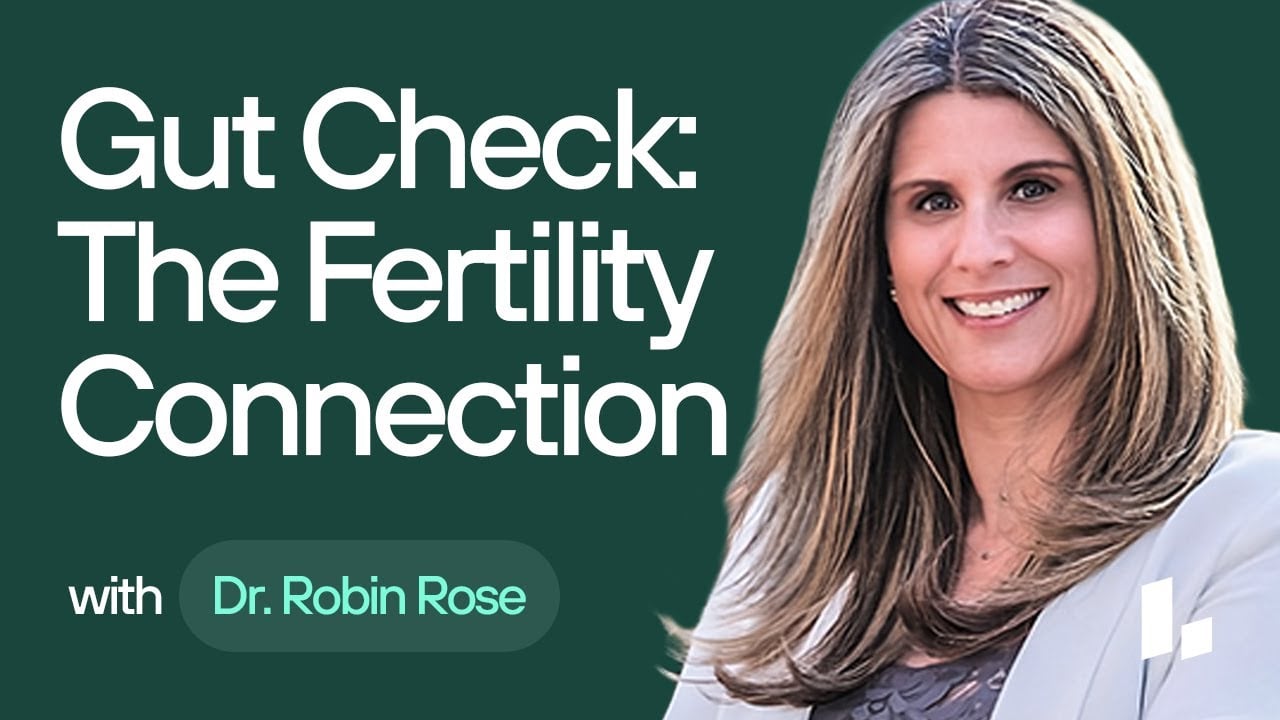Intermittent fasting (IF) has gone from biohacker trend to mainstream diet in the past decade. In 2020, it was the most popular diet followed by Americans, with 10% saying they practice it.
Intermittent fasting can have many benefits for metabolic health, but it doesn’t work for every person in every scenario. In her most recent book, Women, Food, and Hormones, Levels advisor and four-time New York Times best-selling author Sara Gottfried, M.D., describes the concept of an “IF refugee.” Commonly occuring in women, this is when someone is following a fasting protocol but not seeing any benefits. Instead, they may experience negative side effects similar to those experienced by many women on a ketogenic diet such as insomnia, weight gain, or heightened inflammation. And people with disordered eating are not good candidates for IF. In an interview with Levels, Dr. Gottfied describes intermittent fasting as a “back door to ketosis” because both cause the body to shift metabolically and burn alternative fuel sources for energy. “Somewhere around a 14- to 18-hour overnight fast is where you start to produce ketones,” she said, which is why many women experience similar side effects with ketogenic diets and IF diets.
If you tried intermittent fasting but found you felt worse, you’re far from alone. Read on for a deeper understanding of intermittent fasting and women’s health, and how to tweak your IF protocol to make it work for you.
The metabolic benefits of intermittent fasting
There are many approaches to intermittent fasting. Different protocols involve reducing the number of hours you eat or reducing calories to a certain level so that your body moves into a fasted state.
The most commonly talked about and studied approach to fasting is time-restricted eating, which shortens your daily “eating window.” A 16:8 approach to time-restricted eating requires fasting for 16 hours of the day (such as 7pm to 11am), and then eating within the remaining 8-hour period (in this case, 11am to 7pm). Other protocols include the 5:2 method, where you fast for two full days a week, and modified alternate day fasting, which involves reducing your caloric intake to less than 500 every other day.
Research suggests time-restricted feeding, the most popular protocol, can reduce inflammation and may improve cardiovascular health and fend off obesity. IF can also help develop metabolic flexibility, your body’s ability to switch easily between the two primary fuel sources: glucose, which comes primarily from the carbohydrates you eat; and stored fat, which your body burns for energy when glucose is not available.
This process of using fat as an alternative source of fuel is called ketosis, and it is characterized by the production of ketone bodies, which act as the fuel source. It entails metabolizing lipids stored in fat cells, which turn into free fatty acids and, eventually, ketone bodies. Research suggests that ketosis begins about 12 hours into a fast, and that the longer the fasting window, the greater the ketone response will be.
Many of the benefits of fasting have to do with ketones; research shows that ketones can suppress oxidative stress (an imbalance in antioxidants and free radicals in the body that can lead to tissue and DNA damage). Animal studies suggest ketones can improve brain structure and function after injury. Other studies have suggested that being in a ketogenic state can help with weight loss, visceral fat (a type of fat stored in the body around the organs), and appetite control.
This idea of manipulating your body into burning ketones is the basis for the ketogenic diet, which achieves it not by fasting but by severely restricting carbohydrate intake to stay in ketosis effectively all the time.
It’s important to note that research on the traditional ketogenic diet shows important differences for men and women. Very few studies have been done on different outcomes between sexes, but one study on mice presented at the conference ENDO 2019 by University of Iowa researchers (but not yet published) showed that after 15 weeks on a ketogenic diet, the male mice maintained blood glucose control and lost body weight while the female mice gained weight. Whether this translates to humans is unclear, but women may need to take a different, more nuanced approach to both intermittent fasting and ketosis.
Levels Member Experience:
Different outcomes in intermittent fasting
“For some women, intermittent fasting can spur fatigue, weight gain, constant hunger, and inflammation,” says Dr. Gottfried, explaining that women simply need to approach intermittent fasting differently from men. Why? “Women are much more vulnerable to hormonal imbalance than men, which is one of the reasons why women often don’t see the same results as men when it comes to intermittent fasting.”
Studies examining IF’s effects on women are limited, but the research that exists offers some clues about different outcomes. For example, one study on 8 men and 8 women showed that after three weeks on a fasting protocol that involved completing regular 36-hour fasts, men’s blood sugar control improved, while blood sugar control actually worsened in women with results showing they cleared glucose from their bloodstream less efficiently.
Other studies have shown that women tend to have a greater increase in fatty acid and ketone concentrations and a greater decrease in blood glucose than men when fasting, but other studies on glucose activity show conflicting results. Another study showed that men and women who fasted for 24 hours had slightly different experiences in their self-reported hunger, and that women reported feeling hungrier. Researchers note that it’s difficult to determine what physiological processes are responsible for these differences in part because on average male and female bodies have differences—such as women having a higher body fat percentage on average than men—that can independently influence the body’s metabolic response to fasting and make it hard to compare the two directly.
Learn more:
The negative side effects of stress
Some experts believe that the female body’s stress response is a key factor behind the different outcomes.
“On a fundamental level, fasting puts the body under stress,” says Anjali Dsouza, MD, a physician and functional medicine expert specializing in women’s health. Typically, the stress fasting puts your body under is a beneficial form of stress, called hormesis. Hormesis is when short-term or acute stress—such as exercise, fasting, or cold exposure, for example—can make your body resilient in the long-term.
But this isn’t always the case for menstruating women, who have fluctuations in mood, energy levels, sleep, and stress levels throughout the month. “A woman’s biochemical needs fluctuate because of hormonal fluctuations, and that makes a continuous approach towards fasting a little tricky,” says Dsouza.
“I find women are more likely to have stress and cortisol problems, and intermittent fasting overall raises cortisol. The ‘positive stress’ of IF might potentially aggravate an existing situation of elevated cortisol in women who are already struggling to manage their stress levels,” says Dr. Gottfried.
“There are multiple hormones at play in women’s bodies, but some of the ones that affect women the most are cortisol, estrogen, and thyroid hormones,” she says, and the way intermittent fasting affects these hormones may help explain why the practice can sometimes backfire for women.
How IF affects hormonal balance in women
Here, we take a deeper dive into the ways fasting can affect the balance of key hormones for women, and the different outcomes that may result.
1. Elevation in cortisol
As Dr. Gottried wrote in her book Women, Food, and Hormones, “I’ve wondered over the years if the decreased insulin and glucose that we see as a result of the ketogenic diet, or even during fasting, when you go for some period of time without eating, might be perceived as a greater alarm in women as compared to men—meaning it sets off warning signals in the female body that something is wrong.” Studies do show that multi-day fasting can “dramatically elevate” cortisol levels, which is associated with symptoms like weight gain, muscle weakness, high blood sugar, high blood pressure, excessive hair growth, and weak bones.
2. Rise in blood sugar
“Once cortisol spikes, you’re going to have an increase in blood sugar levels, which may be responsible for the fewer benefits and more side effects [from fasting] observed in women,” says Dr. Dsouza. Research shows that stress prompts a hormonal response in the body that affects glucose levels, causing your body to release glucose into the bloodstream for your muscles to use as part of your fight or flight response. To increase blood glucose, your body produces adrenaline and glucagon. These surges of blood sugar can eventually drive your cells to become insulin resistant, and your blood sugar ends up chronically elevated. This can make it hard to get the benefits of fasting, and sabotage your efforts especially in the second half of the cycle—the luteal phase—when you are already naturally more insulin resistant.
3. Drop in thyroid hormones
Putting the body under the stress of fasting can also affect the activity of the thyroid, a gland located in your neck that is responsible for the production of hormones that affect every organ in the body and govern the body’s energy levels. According to Gottfried, the lack of carbohydrates experienced during fasting is what affects the thyroid specifically. “Women need carbs for their thyroid. Carb restriction can affect levels of the thyroid hormone reverse T3, which provides a mechanism to slow down metabolism in order to save energy,” she explains. Gottfried believes that what happens for many women is that their body is already experiencing heightened stress — women are nearly twice as likely to experience severe stress and anxiety as men, according to a 2016 study — and then a calorie-restricted fasting diet stresses it more, and they start producing more reverse T3 and metabolism slows, leading to low energy and weight gain.
4. Disruption of sex hormones
As Dr. Gottfied explains, “If you have dysregulated cortisol due to fasting, you’ll sacrifice production of thyroid hormones and sex hormones like estrogen, progesterone, and androgens,” she says. There’s very little research on this side effect of fasting and the mechanisms behind it, but one study on rodents showed that young rats who fast every other day for 12 weeks experienced menstrual cycle irregularities due to an increase in estrogen and a decrease in luteinizing hormone, which is the hormone that triggers ovulation when it rises mid-cycle.
How women can make the most of IF
The good news is that you can still reap benefits from intermittent fasting if you adopt a periodic fasting protocol tailored to your hormonal fluctuations and unique biochemical needs caused by these fluctuations.
Options include:
1. Opt for time-restricted feeding
The type of fasting protocol you attempt is the first thing to adjust if you’re experiencing unwanted side effects. “The 5:2 method where you choose two days a week to keep your calories below 500, might trigger an increase in cortisol and in women, a continued increase in the stress hormone could affect hormones, the menstrual cycle, and fertility,” says Dr. Gottfried.
As Dr. Dsouza explains, the first thing you can do if you’re feeling like an “IF refugee” is do daily time restricted feeding, and shorten your fasting window. “For women I’m working with, we think about a 12-hour fast as a basic minimum—everyone and anyone can do that without worrying about side effects.” This approach can help you get many of the benefits of fasting without putting your body under too much stress and triggering cortisol and adrenaline. “It’s a nice way to tap into a little bit of cellular cleanup and give your body some digestive rest,” she says.
2. Avoid longer fasts on days 15 to 28 of your cycle
The second adjustment you can make is avoiding extended fasts (more than 14 hours) during the second half of your cycle, which spans from post-ovulation until you start bleeding. “This is already an extremely energy-dependent time and those sensors in the body for stress are much more sensitive, so it’s not the time for extended fasts,” says Dr. Dsouza. If you want to experiment with longer fasts, the first half of your cycle—the follicular phase, which spans from the first day of your period to ovulation—is a good time to experiment with longer fasts and different fasting protocols. Dr. Gottfired recommends sticking to shorter fasts throughout your whole cycle if you have a known thyroid issue: “Women with [known] thyroid issues may need a slow onramp, starting first with 12- to 14-hour fasts twice per week only,” says Dr. Gottfried.
3. Moderately increase calories and healthy carbohydrates on days 15 to 28
This second half of your cycle is also a good time to be gentle with your body. “I really encourage an increase in calories by about 200 and I also push a little heavier on carbohydrates (like sweet potato, squash, and carrots) since your body is going to need and want more carbs as you push out that progesterone, which is the hormone that rises during this phase,” says Dr. Dsouza.
Increasing your carbohydrate can also help safeguard thyroid health and prevent the metabolism from slowing, says Dr. Gottfried, who encourages focusing on nutrient-dense foods during your eating window that contain low-glycemic carbohydrates to replenish your body. She recommends a Mediterranean-type diet to break a fast with 40% carbohydrates, 30% protein or less, and 30% fat. “For example, eat a big bowl of steamed vegetables with an anti-inflammatory protein such as salmon or grass-fed beef and a healthy fat,” she says.
4. Recognize your baseline stress levels.
It’s also important to take into account baseline stress levels and general environmental context. Are you starting a new job? Wrangling two young children under 5? Studying for a huge test? Those probably aren’t the best time to do longer fasts as you’re likely already experiencing chronic stress.
5. Focus on sleep
Dr. Gottried stresses that all women but especially those experimenting with fasting need to make sure they’re getting adequate amounts of high-quality sleep. “Women tend to experience more disruptions to their sleep cycle and also as they move into the perimenopausal years,” she explains. “Sleeping 7 to 8.5 hours every night keeps cortisol balanced and in check,” she continues.
The female body often requires a more flexible, nuanced approach, and intermittent fasting is no exception.
 Want to see how fasting impacts your blood sugar?
Want to see how fasting impacts your blood sugar?
Levels, the health tech company behind this blog, can help you see how things like intermittent fasting affet your metabolic health. Get access to the most advanced continuous glucose monitors (CGM), along with an app that offers personalized guidance so you can build healthy, sustainable habits. Click here to learn more about Levels.











